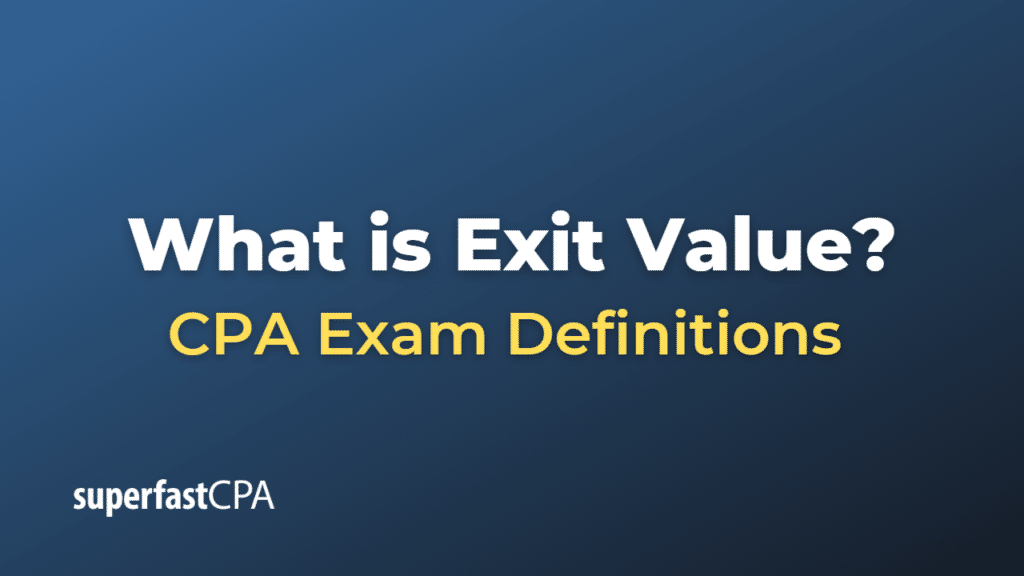Exit Value
Exit value, in the context of investing, refers to the value that an investment realizes when it is sold or otherwise exited. It is often used when discussing the return on investment in private equity or venture capital investments.
When a private equity firm or venture capitalist invests in a company, they typically do so with a plan to eventually “exit” the investment through a liquidity event such as a sale of the company (trade sale), a public offering (IPO), or a buyout by another investor or the company’s management (MBO). The value received at this exit is the exit value.
The exit value, minus the initial investment and any additional investment during the holding period, equals the profit or loss on the investment.
For example, if a venture capitalist invests $10 million in a startup and later sells their stake in the company for $50 million during a trade sale, the exit value is $50 million and the profit is $40 million ($50 million exit value – $10 million initial investment).
Please note that this is a simplified example and real-life scenarios may involve additional complexities such as fees, changes in the ownership stake over time, and others. It’s also important to remember that investing in private companies involves significant risks and is not suitable for all investors.
Example of Exit Value
Let’s look at a simplified example involving a venture capital (VC) investment.
Suppose a venture capital firm invests $5 million into a promising tech startup for a 25% stake in the company. They work closely with the startup, providing funding, guidance, and resources over several years to help it grow.
After seven years, a large tech corporation shows interest in acquiring the startup and offers $200 million for it. The VC firm agrees to the sale, and as a result, they get 25% of the $200 million exit value, which equals $50 million.
So, in this case, the VC firm’s exit value is $50 million. If we subtract their initial investment of $5 million, we get a profit of $45 million from the deal.
Remember, this is a simplified example and actual venture capital deals can be much more complex and risky. Factors such as dilution of ownership, management fees, performance fees, and more need to be considered. Not all investments yield positive returns, and the possibility of losing the entire investment is very real. As such, professional advice should be sought when considering such investments.













